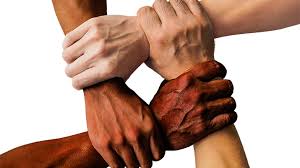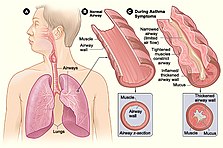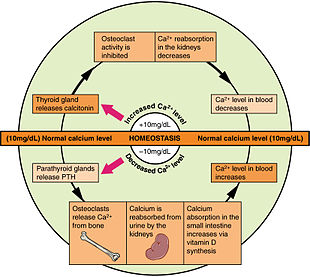We're for all- ALL are for us for the greater interest of Humanism-Truth-Facts-Friendship-Unity-Participation including Physico-Mental Sound Health with Spirituality, enrichment through ''TOTAL HEALTH SOLUTION'' to a Well-furnished GOALofTruth alloted for all in real sense ;
Though Health is Wealth yet It has Physical-Mental-Spiritual & etc. BASICs to evaluate properly both Separately and Mixed Forms where so many troubles reflect periodically without notices & hidden causes are working always POSSIBLY with Latent Hints.

From wikipedia & other reliable sources (Poets, Writers, Thinkers, Researchers, Free Lancers, Philosophers, Theologists, Scientists, Orators, Sociologists and Photographers +Artists-Musicians & UN etc.) we can learn as follows :








Religion is usually defined as a social-cultural system of designated behaviors and practices, morals, beliefs, worldviews, texts, sanctified places, prophecies, ethics, or organizations, that generally relates humanity to supernatural, transcendental, and spiritual elements;[1] however, there is no scholarly consensus over what precisely constitutes a religion.[2][3] Different religions may or may not contain various elements ranging from the divine,[4] sacred things,[5] faith,[6] a supernatural being or supernatural beings[7] or "some sort of ultimacy and transcendence that will provide norms and power for the rest of life".[8]
Religious practices may include rituals, sermons, commemoration or veneration (of deities or saints), sacrifices, festivals, feasts, trances, initiations, funerary services, matrimonial services, meditation, prayer, music, art, dance, public service, or other aspects of human culture. Religions have sacred histories and narratives, which may be preserved in sacred scriptures, and symbols and holy places, that aim mostly to give a meaning to life. Religions may contain symbolic stories, which are sometimes said by followers to be true, that may also attempt to explain the origin of life, the universe, and other phenomena. Traditionally, faith, in addition to reason, has been considered a source of religious beliefs.[9]
There are an estimated 10,000 distinct religions worldwide.[10] About 84% of the world's population is affiliated with Christianity, Islam, Hinduism, Buddhism, or some form of folk religion.[11] The religiously unaffiliated demographic includes those who do not identify with any particular religion, atheists, and agnostics. But many of the religiously unaffiliated still have various religious beliefs.[12] A portion of the population mostly located in Africa and Asia are members of new religious movements.[13] Scholars have indicated that global religiosity may be increasing due to religious countries having higher birth rates in general.[14]
The study of religion comprises a wide variety of academic disciplines, including theology, philosophy of religion, comparative religion, and social scientific studies. Theories of religion offer various explanations for the origins and workings of religion, including the ontological foundations of religious being and belief.[15]
Health, according to the World Health Organization, is "a state of complete physical, mental and social well-being and not merely the absence of disease and infirmity".[1] A variety of definitions have been used for different purposes over time. Health can be promoted by encouraging healthful activities, such as regular physical exercise and adequate sleep,[2] and by reducing or avoiding unhealthful activities or situations, such as smoking or excessive stress. Some factors affecting health are due to individual choices, such as whether to engage in a high-risk behavior, while others are due to structural causes, such as whether the society is arranged in a way that makes it easier or harder for people to get necessary healthcare services. Still, other factors are beyond both individual and group choices, such as genetic disorders.
The meaning of health has evolved over time. In keeping with the biomedical perspective, early definitions of health focused on the theme of the body's ability to function; health was seen as a state of normal function that could be disrupted from time to time by disease. An example of such a definition of health is: "a state characterized by anatomic, physiologic, and psychological integrity; ability to perform personally valued family, work, and community roles; ability to deal with physical, biological, psychological, and social stress".[3] Then, in 1948, in a radical departure from previous definitions, the World Health Organization (WHO) proposed a definition that aimed higher, linking health to well-being, in terms of "physical, mental, and social well-being, and not merely the absence of disease and infirmity".[4] Although this definition was welcomed by some as being innovative, it was also criticized for being vague and excessively broad and was not construed as measurable. For a long time, it was set aside as an impractical ideal, with most discussions of health returning to the practicality of the biomedical model.[5]
Just as there was a shift from viewing disease as a state to thinking of it as a process, the same shift happened in definitions of health. Again, the WHO played a leading role when it fostered the development of the health promotion movement in the 1980s. This brought in a new conception of health, not as a state, but in dynamic terms of resiliency, in other words, as "a resource for living". In 1984, WHO revised the definition of health defined it as "the extent to which an individual or group is able to realize aspirations and satisfy needs and to change or cope with the environment. Health is a resource for everyday life, not the objective of living; it is a positive concept, emphasizing social and personal resources, as well as physical capacities."[6] Thus, health referred to the ability to maintain homeostasis and recover from adverse events. Mental, intellectual, emotional and social health referred to a person's ability to handle stress, to acquire skills, to maintain relationships, all of which form resources for resiliency and independent living.[5] This opens up many possibilities for health to be taught, strengthened and learned.
Since the late 1970s, the federal Healthy People Program has been a visible component of the United States’ approach to improving population health.[7][8] In each decade, a new version of Healthy People is issued,[9] featuring updated goals and identifying topic areas and quantifiable objectives for health improvement during the succeeding ten years, with assessment at that point of progress or lack thereof. Progress has been limited to many objectives, leading to concerns about the effectiveness of Healthy People in shaping outcomes in the context of a decentralized and uncoordinated US health system. Healthy People 2020 gives more prominence to health promotion and preventive approaches and adds a substantive focus on the importance of addressing social determinants of health. A new expanded digital interface facilitates use and dissemination rather than bulky printed books as produced in the past. The impact of these changes to Healthy People will be determined in the coming years.[10]

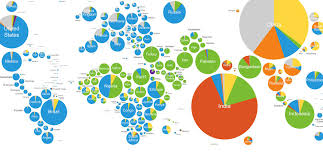 Systematic activities to prevent or cure health problems and promote good health in humans are undertaken by health care providers. Applications with regard to animal health are covered by the veterinary sciences. The term "healthy" is also widely used in the context of many types of non-living organizations and their impacts for the benefit of humans, such as in the sense of healthy communities, healthy cities or healthy environments. In addition to health care interventions and a person's surroundings, a number of other factors are known to influence the health status of individuals. These are referred to as the "determinants of health", which include the individual's background, lifestyle, economic status, social conditions and spirituality; Studies have shown that high levels of stress can affect human health.[11]
Systematic activities to prevent or cure health problems and promote good health in humans are undertaken by health care providers. Applications with regard to animal health are covered by the veterinary sciences. The term "healthy" is also widely used in the context of many types of non-living organizations and their impacts for the benefit of humans, such as in the sense of healthy communities, healthy cities or healthy environments. In addition to health care interventions and a person's surroundings, a number of other factors are known to influence the health status of individuals. These are referred to as the "determinants of health", which include the individual's background, lifestyle, economic status, social conditions and spirituality; Studies have shown that high levels of stress can affect human health.[11]
In the first decade of the 21st century, the conceptualization of health as an ability opened the door for self-assessments to become the main indicators to judge the performance of efforts aimed at improving human health.[12] It also created the opportunity for every person to feel healthy, even in the presence of multiple chronic diseases or a terminal condition, and for the re-examination of determinants of health (away from the traditional approach that focuses on the reduction of the prevalence of diseases).[13]
Mental health encompasses emotional, psychological, and social well-being, influencing cognition, perception, and behavior. It likewise determines how an individual handles stress, interpersonal relationships, and decision-making.[1] Mental health includes subjective well-being, perceived self-efficacy, autonomy, competence, intergenerational dependence, and self-actualization of one's intellectual and emotional potential, among others.[2] From the perspectives of positive psychology or holism, mental health may include an individual's ability to enjoy life and to create a balance between life activities and efforts to achieve psychological resilience.[3] Cultural differences, subjective assessments, and competing professional theories all affect how one defines "mental health".[4] Some early signs related to mental health problems are sleep irritation, lack of energy, lack of appetite and thinking of harming yourself or others.[5]
Mental health, as defined by the Public Health Agency of Canada,[6] is an individual's capacity to feel, think, and act in ways to achieve a better quality of life while respecting the personal, social, and cultural boundaries.[7] Impairment of any of these are risk factors for mental disorders, or mental illness [8] which is a component of mental health.[7] Mental disorders are defined as the health conditions that affect and alter cognitive functioning, emotional responses, and behavior associated with distress and/or impaired functioning.[9][10] The ICD-11 is the global standard used to diagnose, treat, research, and report various mental disorders.[11][12] In the United States, the DSM-5 is used as the classification system of mental disorders.[13]
Mental health is associated with a number of lifestyle factors such as diet, exercise, stress, drug abuse, social connections and interactions.[13][14] Therapists, psychiatrists, psychologists, social workers, nurse practitioners, or family physicians can help manage mental illness with treatments such as therapy, counseling or medication.[15]

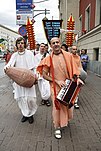


 The meaning of spirituality has developed and expanded over time, and various meanings can be found alongside each other.[1][2][3][note 1] Traditionally, spirituality referred to a religious process of re-formation which "aims to recover the original shape of man",[note 2] oriented at "the image of God"[4][5] as exemplified by the founders and sacred texts of the religions of the world. The term was used within early Christianity to refer to a life oriented toward the Holy Spirit[6] and broadened during the Late Middle Ages to include mental aspects of life.[7][8]
The meaning of spirituality has developed and expanded over time, and various meanings can be found alongside each other.[1][2][3][note 1] Traditionally, spirituality referred to a religious process of re-formation which "aims to recover the original shape of man",[note 2] oriented at "the image of God"[4][5] as exemplified by the founders and sacred texts of the religions of the world. The term was used within early Christianity to refer to a life oriented toward the Holy Spirit[6] and broadened during the Late Middle Ages to include mental aspects of life.[7][8]
In modern times, the term both spread to other religious traditions[9] and broadened to refer to a wider range of experiences, including a range of esoteric and religious traditions. Modern usages tend to refer to a subjective experience of a sacred dimension[10] and the "deepest values and meanings by which people live",[11][12] often in a context separate from organized religious institutions.[6] This may involve belief in a supernatural realm beyond the ordinarily observable world,[13] personal growth,[14] a quest for an ultimate or sacred meaning,[15] religious experience,[16] or an encounter with one's own "inner dimension".[17]
Classical, medieval, and early modern periods[edit]
Bergomi detects "an enlightened form of non-religious spirituality" in late antiquity.[18]
Words translatable as "spirituality" first began to arise in the 5th century and only entered common use toward the end of the Middle Ages.[19][need quotation to verify] In a Biblical context the term means being animated by God.[20] The New Testament offers the concept of being driven by the Holy Spirit, as opposed to living a life in which one rejects this influence.[6]
In the 11th century, this meaning changed. "Spirituality" began to denote the mental aspect of life, as opposed to the material and sensual aspects of life, "the ecclesiastical sphere of light against the dark world of matter".[21][note 3] In the 13th century "spirituality" acquired a social and psychological meaning. Socially it denoted the territory of the clergy: "the ecclesiastical against the temporary possessions, the ecclesiastical against the secular authority, the clerical class against the secular class".[22][note 4] Psychologically, it denoted the realm of the inner life: "the purity of motives, affections, intentions, inner dispositions, the psychology of the spiritual life, the analysis of the feelings".[23][note 5]
In the 17th and 18th centuries a distinction was made[by whom?] between higher and lower forms of spirituality:[24] "A spiritual man is one who is Christian 'more abundantly and deeper than others'."[23][note 6] The word was also associated with mysticism and quietism, and acquired a negative meaning.[25]
COMMENTS FROM Dr. P. C. Majumder (- Author. Writer, Humanist, Physician (Physico-Mental & Spiritual) and Cosmopolitan Researcher in favor of ALL-CREATION Universally RESIDE++++ in positive ways for universal UNITY & LOVE++++) as follows:
1.
2.
We're for all- ALL are for us for the greater interest of Humanism-Truth-Facts-Friendship-Unity-Participation to a Well-furnished GOAL of Truth from which all shall have ++++;
We're indebted to WIKIPEDIA +UNITED NATIONS & WHO etc. for a short while and as 'Guardian QUOTATION' from Global WISER ONE. And have quoted many images, article's, writings etc. by great & humanist writers+++ from global thinkers, Well-wishers, Wiseman, Humanists and Others Living-Nonlivings in favor of HUMANISM to share more answers of Researchers-readers+++++....
To reach the 'GOAL of FULFILNESS' unitedly to alive in the "DESTINATION of TRUTH-FACTS-CHARMEST AMICABLITY" of Natural Joyful POSSIBILITIES+++
BREAST CANCER, TUMOR, Arsenic+Chemical Poisoning, Corona, Heart-Lung diseases, Neurological-Hormonal-Immunal-Infectious diseases with related complexities are possible to cure properly-easily-scientifically-accurately (100%) by our positive medical services only with+++++balance confirming
Medicine-Food control-proper nursing-medicinal massage-Medicinal Yogas- Meditation, Physiotherapy special etc. without side effects & Repeatation as per contract through user-friendly approved ways of CURE++++. please fill our form as below or click:
After confirming contract-letter between you+++. We serve you properly with no Chemo-therapy-radiation therapy -SURGICAL Complexities (Physical-Mental) to CURE+++ upto our Limit to recover your both-health from illness.




